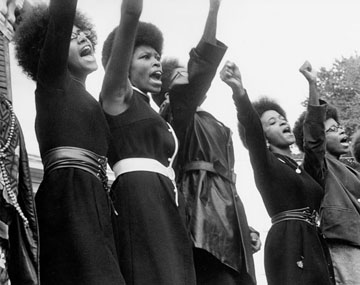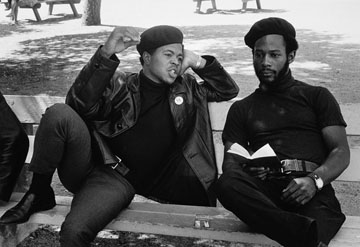 |
|
|
|
| B&W + Color Los Angeles Times Jane Reed's biographic documentary "Pirkle Jones: Seven Decades Remembered" does a sensitive yet stellar job of chronicling the career of one of America's most admired and socially committed photographers of the 20th into the 21st Century. — Ed Guerrero, Cinema Studies, NYU
— Ansel Adams
This film is an outstanding portrait of a photographer’s life and work that captures both the artistic strength of the photography as well as the complexity of the social context in which the photographs were taken. Pirkle photographed the “Death of a Valley” with Dorothea Lang and did a series of the Sacramento Delta. He photographed the Black Panthers, and he made pictures of the Gate Five houseboat community. These don’t seem at first glance to have been done by one person. Pirkle’s is not a singular point of view, so it’s harder to brand or publicize this work. He had a continuing interest in people who work the land, in the landscape and the communities that they establish, and in the vulnerabilities of those communities. These are big issues dealing with society and dealing with who we are as a culture, as a country, and what we stand for. — Dr. Sandra S. Phillips, San Francisco Museum of Modern Art
With uncanny prescience, a sense of urgency, and a sympathetic eye, Jones often plays the dual roles of artist and witness, combining portraiture, landscapes, and architectural photographs to create thorough documents of social structure and upheaval. — Aperture, "Pirkle Jones California Photographs"
To trace the evolution of Pirkle's photographs and the sensibility that shaped them is to encounter a visual strength and pictorial conviction born of rigorous self-evaluation. His keen sense of reflection has always allowed him to learn from his experiences and the facility to be open to collaboration. If one were to dissect the influence of Pirkle's collaborators and subject, it might be said that Ansel Adams was the key to the visual; Dorothea Lange to the political; Ruth-Marion Baruch to the intellectual; the inhabitants of Gate 5 to the interpersonal; and nature to the spiritual. — Tim B. Wride, former curator
PIrkle Jones"s photographs are just like John Steinbeck's writing: they both capture the struggles of California's coming of age and wear its emblem of freedom. With a name like "Pirkle" and his eye for truth, his photographs are irresistible as any orchid he ever grew. — Bruce Weber
I was the communications secretary of the Black Panther Party and so I was the person that Pirkle Jones and Ruth-Marion Baruch got in touch with when they wanted to do photographs of the Black Panthers. I brought them to Eldridge and he said, "Oh. Your pictures are different. Your pictures don't look like the other pictures we see in the press." They were actually very caring and very humane, and that came through in their photographs. — Kathleen Cleaver
|
Black Panthers from Sacramento, Free Huey Rally, Bobby Hutton Memorial Park, Oakland, August 25, 1968; Black Panthers at Free Huey Rally, Bobby Hutton
| ||
| ©2011-12 JLRFilm
info@jlrfilm.com | ||





